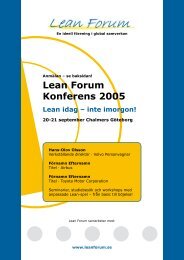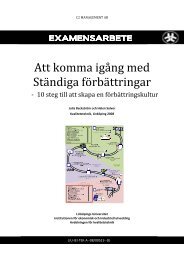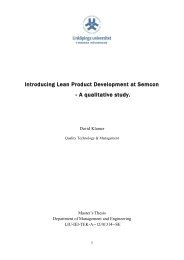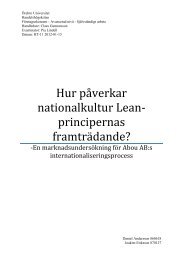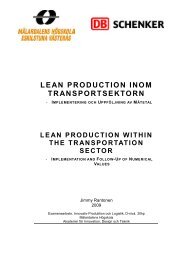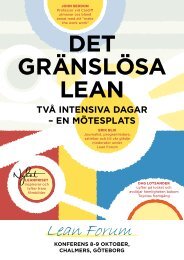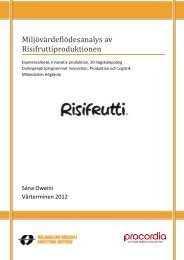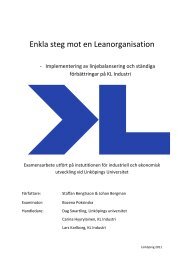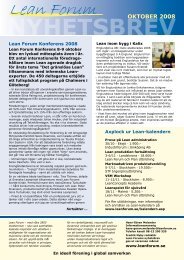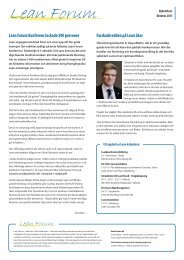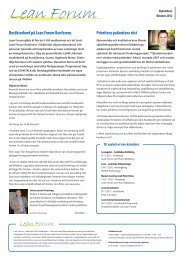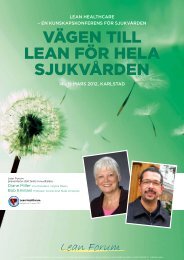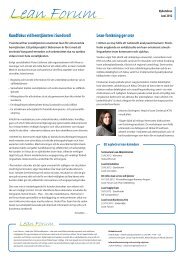Erfarenhetsåterföring för industriellt byggande i samverkan - Lean ...
Erfarenhetsåterföring för industriellt byggande i samverkan - Lean ...
Erfarenhetsåterföring för industriellt byggande i samverkan - Lean ...
Create successful ePaper yourself
Turn your PDF publications into a flip-book with our unique Google optimized e-Paper software.
Abstract<br />
The general construction process today is not designed to handle the entire process as a<br />
system, which means that changes are needed in both process and the management of it.<br />
Within housing is productivity lower than in the manufacturing industries due to a lack of<br />
cooperation between actors, weak commitment, a disruptive construction process and lack of<br />
holistic approach.<br />
Creating maximum value for the customer and minimize waste of resources is fundamental to<br />
lean production and the Toyota Production System, TPS, two of the most successful<br />
manufacturing process philosophies.<br />
To achieve an effective and functioning concept within industrial housing, it should be based<br />
on long-term relationships and continuous processes with a focus on the customers.<br />
Structured processes and practices, standardized technology and knowledge back into the<br />
processes are the key.<br />
MFB, Masonite Flexible Building System, is a building system for industrial construction<br />
with a high degree of prefabrication which minimize and facilitates the assembly work on the<br />
construction site.<br />
MIKS, MFB Industrial Constructive Interaction, is a form of cooperation between actors in<br />
industrial wood construction with the MFB-system. The MIKS model has been developed<br />
during a development project, with two construction projects made with MFB system and<br />
MIKS model.<br />
On site documentation, along with the contractor's statement of costs showing which<br />
procedures were most time- and resource consuming.<br />
Participants were interviewed with techniques from the manufacturing business and the<br />
interviews were analyzed to find the root cause. The analysis shows that the greatest waste is<br />
unnecessary or faulty workmanship, and the waste that it created in turn.<br />
To make it possible for small companies to get together and form a larger totality and thus be<br />
able to compete with larger companies, following are required of the joint action group:<br />
Take control of the process<br />
Designate the process owner<br />
Sets common goals for each new construction project:<br />
• Short-term goals - what the specific project to achieve<br />
• Long-term goals - evaluate and revise<br />
Manages finances with "open books"<br />
The contractor shall appoint and train or hire a process manager<br />
Any actor or team for each stage designates a process observer who uses “five whys”,<br />
continuous follow-up meetings and simple documentation and reports to the process<br />
manager<br />
Determines the technical platform, i.e. cooperation model, philosophy, meeting strategy,<br />
database, measurement systems, etc.<br />
Performs continuous and time-limited measurement and control.<br />
Returns the experience to the common process platform of joint action group and distribute<br />
the information.<br />
3



